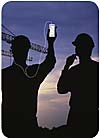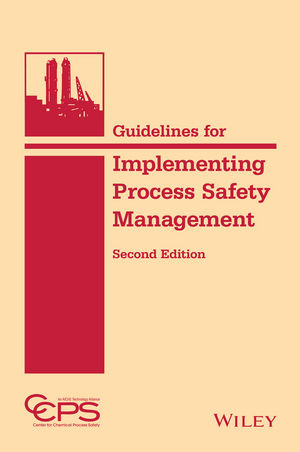

Use at work
A 2006 survey in the United Kingdom found that 22 percent of employees used iPods and other small portable listening devices at work. The survey also found that 30 percent of UK employers have banned iPod use, mostly for security reasons — concerns that the device’s huge digital storage (up to 80 GB) may be used for data theft. While some employers ban iPods, others encourage their use.
The article, “The boss puts the iPods to work,” in the October 25, 2006,Wall Street Journal—http://www.careerjournal.com/myc/officelife/20061027-athavaley.html— is one example. The article describes how iPods may be used for education and training purposes (such as podcasts). Use of iPods may help employees reduce stress or boredom, which some employers believe will lead to increased productivity and greater employee morale.
Is it unprofessional to wear an iPod at work? Among more than 3,000 votes cast in an online AOL lifestyle survey, 49 percent of participants said “yes” while 51 percent said “no.” Whether an iPod user may be disturbing a co-worker or not paying full attention to a customer or work associates shifts the decision of whether use is or is not professional. Age gaps also enter into the picture. “iPod people” are mostly in the age range of 18-30. Younger workers are more likely to view iPod use at work as professionally acceptable, even fashionable, while older workers would not.
Injury hazards
Contrary to a growing urban legend, wearing an iPod does not increase the chance of someone being hit by lightning. Wearing an iPod, however, may influence the path taken by electricity and increase a person’s chance of harm; as would the wearing of metal jewelry or carrying coins in a shirt pocket. As with any battery-operated device, iPod use around flammable vapors may increase the risk of fire or explosion. Police in some jurisdictions have observed an increase in personal assault and theft when iPods are worn in public. An iPod’s small size (smallest version is about the size of a pack of gum), thin earbud/earphone cable, or wireless headset, limits the potential for the device to be caught and draw a worker into machinery.
Hearing loss
Hearing loss is possible with iPod use. The first generation of iPods could produce more than 100 decibels and use of earbuds may increase the sound energy reaching the cochlea. A class-action lawsuit was filed in February 2006 to force Apple to update software to limit the sound output of iPods to no more than 100 dB.
The research, “Sound output levels of the iPod and other MP3 players: Is there a potential risk to hearing?” —http://www.hearingconservation.org/docs/virtualPressRoom/portnuff.htm— was presented in October 2006 at a hearing loss in children meeting in Cincinnati. The research showed that hearing loss was possible. The findings are not surprising. As early as 1987, NIOSH had evaluated the use of Walkman radios, tape and CD players and found sound output could exceed OSHA limits and that the headsets used with these devices afforded no ear protection (average NRR of 1 dB).
At a 100 percent volume setting an iPod could produce sounds loud enough to damage hearing in as little as a few minutes each day. But at volume settings below 50 percent, no harm is expected regardless of how much time is spent listening. Newer generations of iPods have a programmable “Volume Limit” that may be set to prevent harmful sound levels. Third-party products such as AirDrives hybrid earphones and Roadrunner Audio EarSaver are advertised to keep iPod sounds at safe levels and not mask out background horns, alarms or voices.
Distraction
Could iPod use distract from attention to safety at work? I could not find research to directly answer this question. The closest research that applies comes from statistics in driver distraction that result in vehicle accidents. Adjusting the controls — tuning the radio to a station — accounts for two to five percent of vehicle accidents. Listening to the car’s radio, however, shows mixed findings. Some studies show that listening to “soft music” potentially improves driver response time, while other studies show that reaction times may be slowed. If a car’s radio, sound system or use of headsets distracts from being able to hear horns or alarms outside the vehicle, we should assume that risks are too great.
Accident causation
One of the problems in accident investigations is the failure of investigators to find the root cause. A foreseeable problem with anyone involved in an accident at work while wearing an iPod is that accident investigators may wrongly conclude the accident was due to the worker listening to the iPod and “not thinking” about safety, or was “careless” or “inattentive.” The root cause, however, would likely go deeper than these surface findings.
Unsafe act/behavioral safety
The iPod should not be viewed as an unsafe condition. The act of using the iPod determines if harm is likely. One can argue that an iPod may be used to steal electronic data. It is the act of stealing that is the real issue. Likewise, the sound adjustment on the iPod is more of an act than condition.
The primary purpose of an iPod (at the present moment) is to bring sounds to a person’s ears. The sounds may or may not be at a conscious level, the sounds may entertain or inform, or may influence moods. Assuming the sound levels are not loud enough to cause hearing loss, the issue boils down to how people behave to what they hear on their iPod. An established behavioral safety management program — training, observation, intervention, etc. — is important to determine if iPod use at work is OK.
Risk vs. reward
The injury risk that iPod use may pose at work must be determined for each particular setting and activity. Provided that the employer manages the safe use of iPods — sets clear policy on use, observes and enforces behavior such as volume setting less than 50 percent, etc. — risks are expected to be low. Banning iPod use at work eliminates any injury risk from this device.
But rewards of iPod use should not be overlooked. If use fosters greater employee morale, then safety may also benefit. Consider the benefits of training. Assume for the privilege of using an iPod at work, employees agree to listen to a 30-second “safety message” programmed into their iPod every half hour, similar to a commercial on the radio. By year’s end employees will receive more than 30 hours of safety training without having pulled them away from their job.
If iPods and similar devices were a passing fancy or only used by a few employees, then banning makes sense. The technology, however, is being embedded in society, especially in the younger generation of workers. iPods are an evolving form of communication that should be managed, and not banned, by employers.

